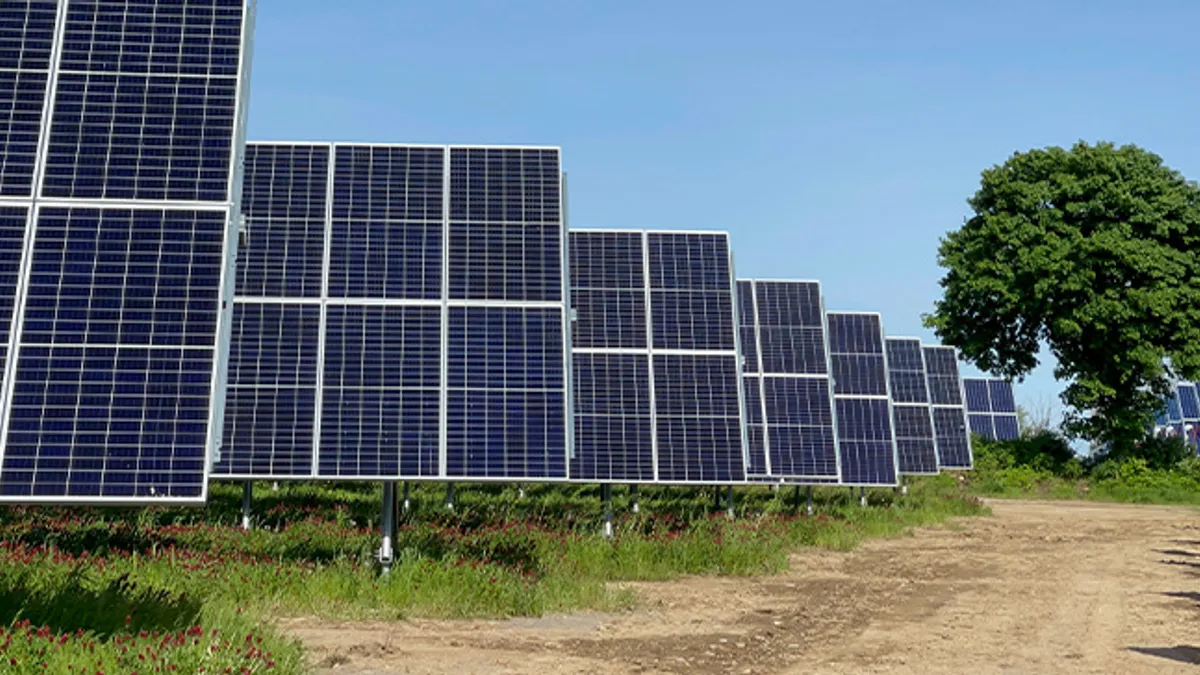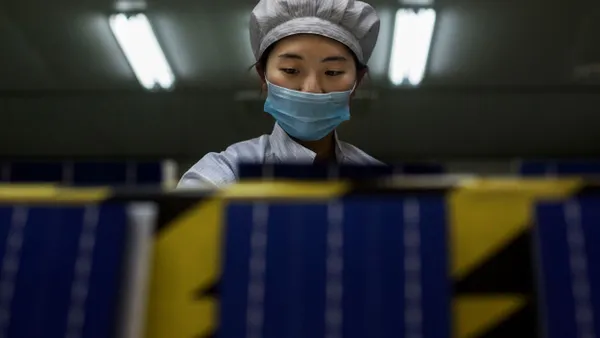Solar trackers offer significant benefits over fixed tilt systems, most notably in their ability to increase energy production, mitigate weather-related risks, and reduce downtime. They were once considered a riskier investment than fixed-tilt projects due to high maintenance and material costs. Trackers remained a niche market for years, but as demand for solar grew, manufacturers were able to scale and lower costs—and their popularity soared. In the last decade, the tracker market has grown exponentially, outstripping fixed-tilt in most utility solar markets.
Advancements in tracker technology are a key driver to tracker growth. Over the years, manufacturers have innovated products to be studier, more reliable, and adaptable. Improvements in how components are produced and engineered make trackers more cost effective, while advances in installation and site design techniques mean that previously uneconomical sites, such as those located on undulating terrain or in rough climates, now offer greater potential for increased ROI.
Software and controls: the future of energy production
As the mechanical components of tracker technology become more robust and adaptable, the next stage of tracker growth lies in its software. Controls powered by artificial intelligence (AI) and machine learning enable increased energy yield and optimized operations—promising developers and asset owners better returns and lending a more competitive edge to projects. Here are four key features to look out for in an intelligent tracker system:
1. Machine learning
Intelligent tracker software utilizes data and algorithms to optimize performance, increase energy output, and reduce downtime. For example, adaptive machine learning can account for changes in days getting longer and shorter throughout the year—gathering data to build a projection of where the row should be at different times of the day, then optimizing the modules’ positions to gain maximum sunlight exposure.
Another benefit of tracker over fixed tilt systems is its ability to minimize shading. In fixed-tilt systems, site design with adequate spacing is the only way to avoid shading between rows, but with intelligent tracker software, the backtracking algorithm can determine when a row is shading from east to west, and position panels accordingly to avoid shading adjacent rows. Machine learning knows how each individual row should be tracking and can tell you when a row isn’t tracking on its normal path, alerting you quickly of any issues.
2. Smart weather API and sensors
The shifting landscape of solar means that developers are having to build in sites with harsher climates. To better mitigate risks, smart tracker technology can command sites to stow when sensors detect snow and wind thresholds are crossed on the on-site weather stations. Meanwhile, weather API predicts when bad weather is coming and proactively stows sites, preventing damage.
3. Real-time monitoring capabilities
Knowledge of how a site is performing at all times is essential to optimizing operations. With intelligent tracker technology, data is continuously fed into the cloud in real-time—enabling operators to fix issues before they affect performance, saving on cost and mitigating worst-case scenarios. Having an easy-to-understand dashboard where you can view all sites and push notifications ensure you’re alerted of any issues quickly.
4. Remote access
Gone are the days when a bug in the system meant rolling a truck on site to find out what went wrong. Real time monitoring down to row level paired with historical data allows for troubleshooting remotely and quick diagnosis. Since tracker software is constantly updated with new functionality, remote access allows for older sites to receive new and improved features seamlessly without a person on site.
Getting on the right track
As tracker technology continues to improve, software and intelligent controls will likely be a key differentiator in the tracker market. For developers and asset owners, it is essential to engage a partner that offers a comprehensive tracker solution to minimize weather-related risks and boost returns on your sites over the long run.
Terrasmart’s PeakYield™ combines software intelligence and site design techniques to optimize all elements of your tracker’s performance, improving production output and significantly reducing operating downtime. Combined with TerraTrak’s durable racking—designed to integrate with both ground screws and piles to eliminate refusal risk—and you have a complete package that improves performance through seamless hardware and software integration.
Learn about Terrasmart’s intelligent tracker technology and how we can get you on the right track to success. Read the white paper to learn more.










